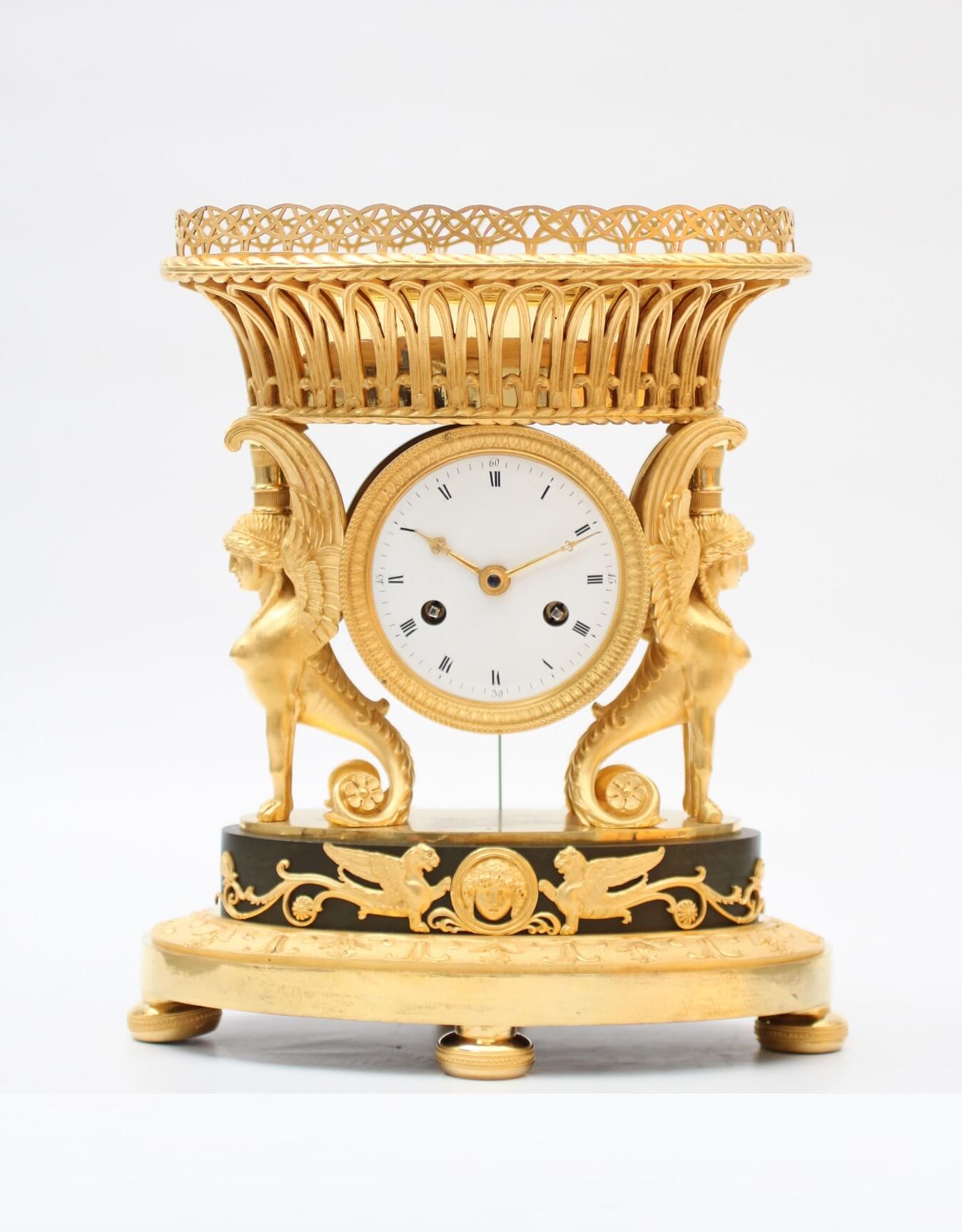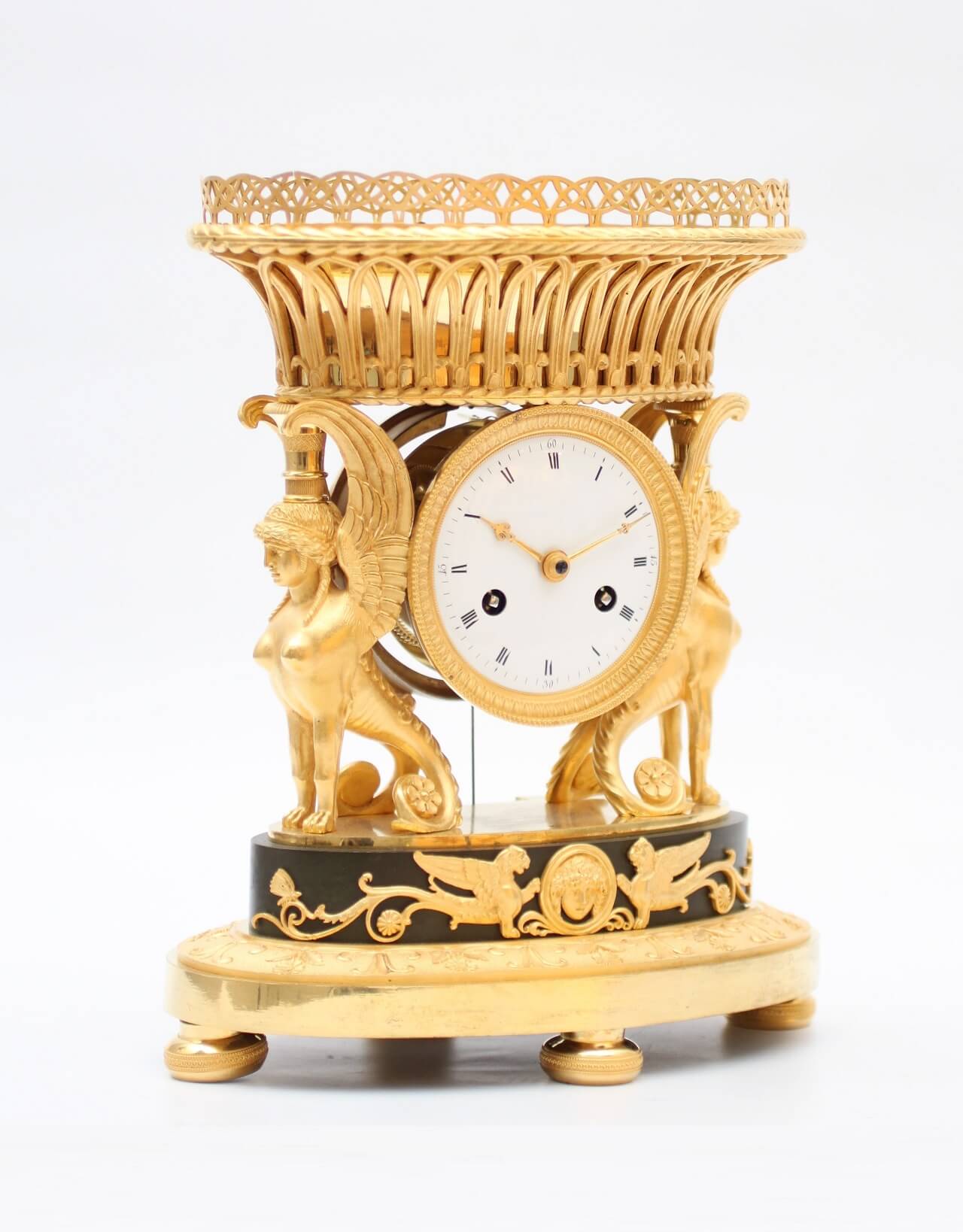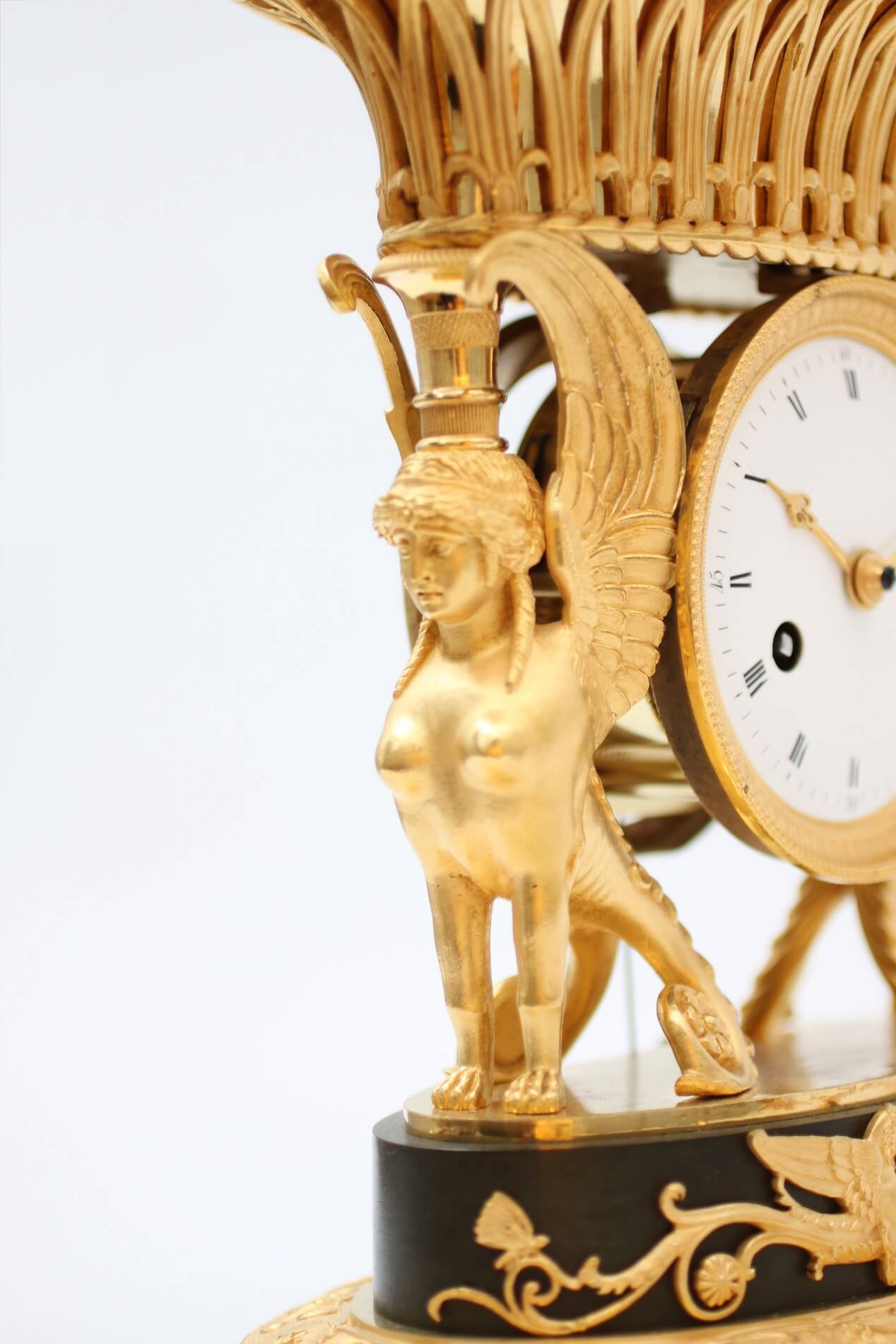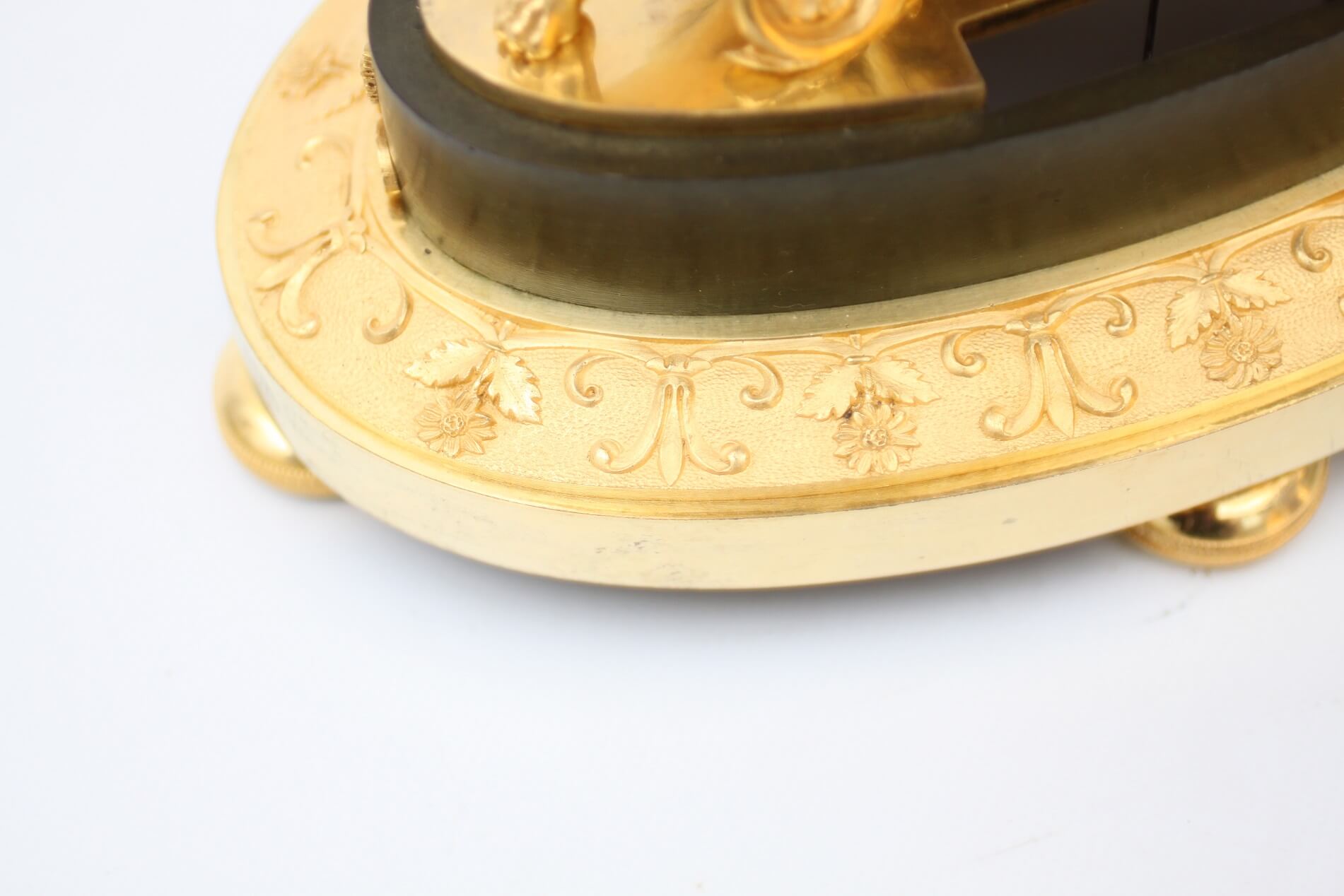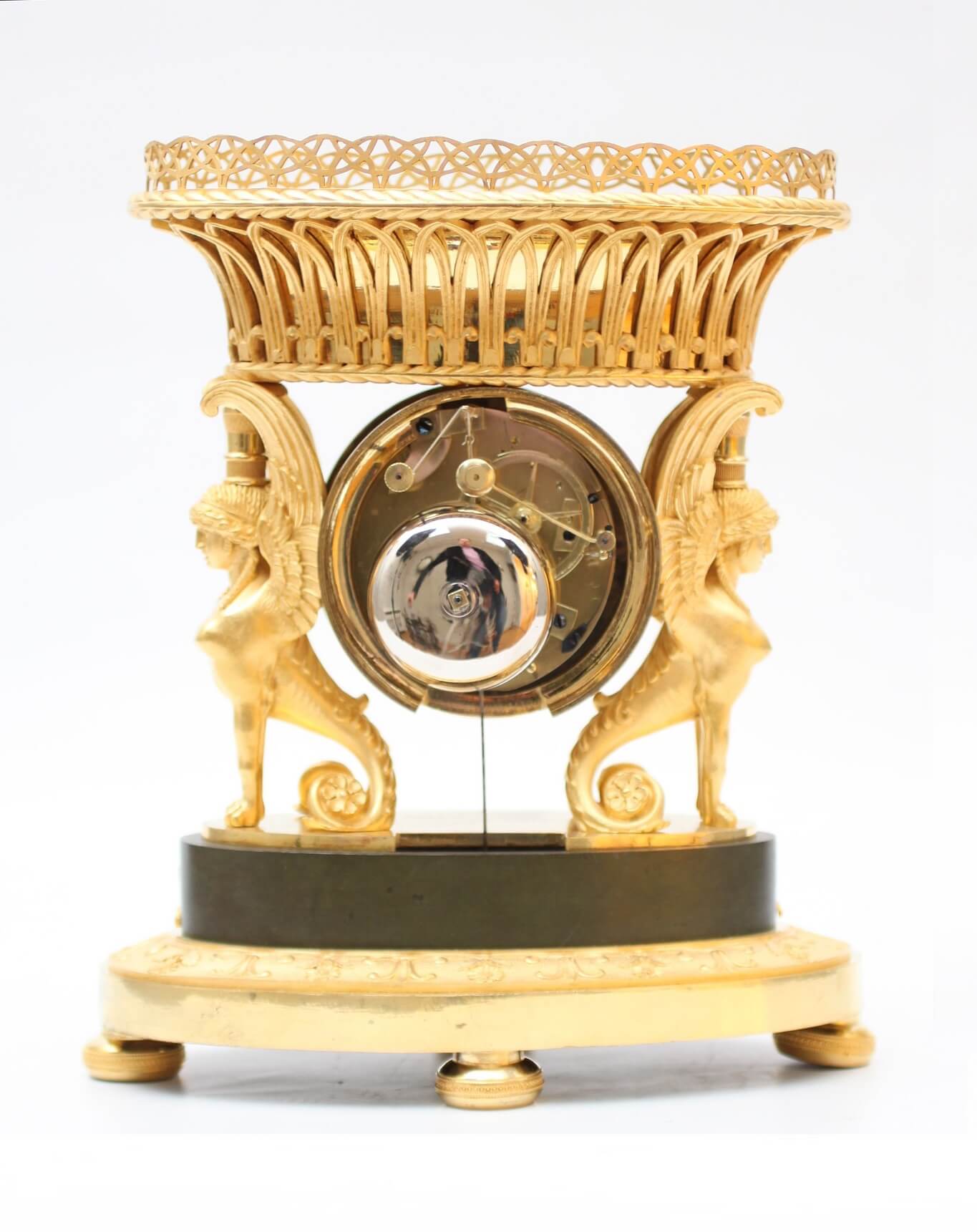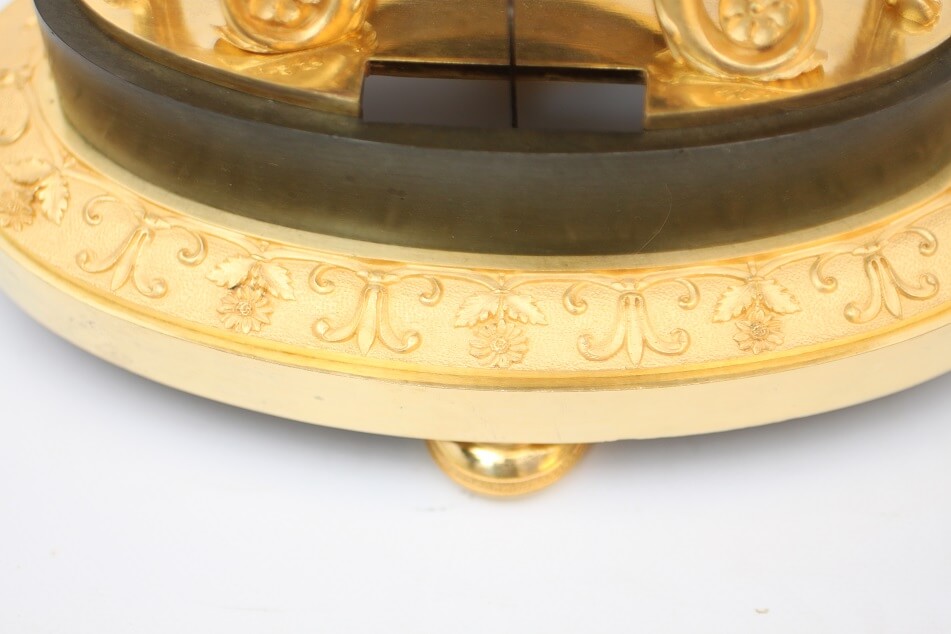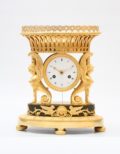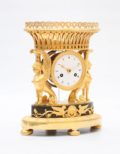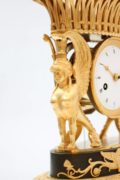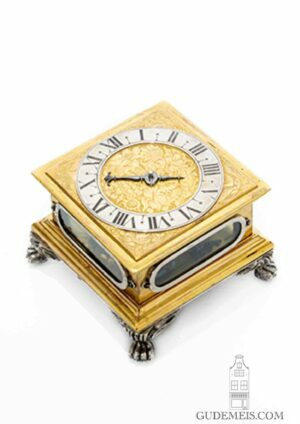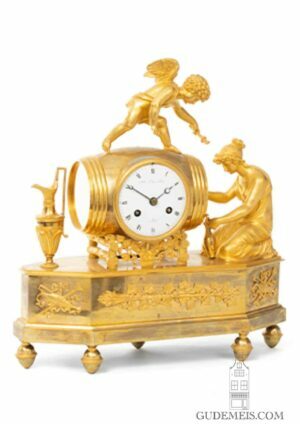A French Empire ormolu urn mantel clock with griffins, circa 1800
Description
8-day movement with half hour striking, very finely cast and chiseled gilt bronze and patinated case.
8.5-cm enamel dial with Roman numerals and fine gilt hands, 8-day spring-driven movement with anchor escapement and silk suspended pendulum, half hour countwheel striking on a bell, fitted in a finely cast and chiseled ormolu case, surmounted by an oval urn supported by two griffins, on an oval stepped base raised on bun feet
Before Napoleon had conquered Egypt, often the classical ancient art of the Greeks and Romans was an inspiration for mantel clocks. After conquering Egypt the subject matter for works of art was enriched with ornament of ancient Egypt. For us the harmony and symmetry of the design in combination with the fine workmanship are probably enough reason to like this clock. But for the elite of the early 19thC who owned clocks like this subject matter was very important. And the figures, symbols or ornament had a deeper layer of meaning only understood by the higher echelon of society. The iconographical meaning of a griffin is vigilance and courage because of the combination of lion and eagle. But in Christianity it also symbolizes the supremacy over heaven (eagle) and earth (lion) like Christ. When looking at it this way, a classical and profane subject suddenly becomes very acceptable in a Christian society.
